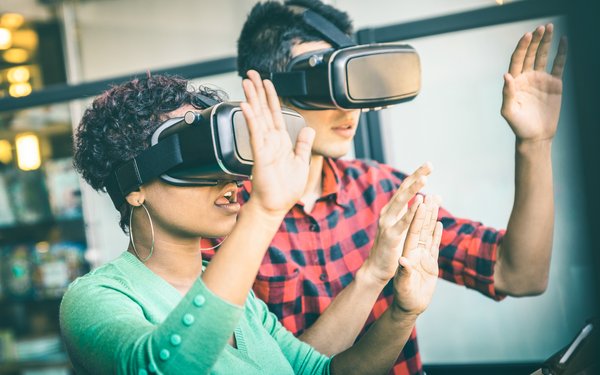
While
virtual and augmented reality keep advancing, there still are obstacles to mass adoption.
The most significant one is serious, since it involves the technology itself.
The biggest
obstacle to mass adoption of VR technology is user experience such as bulky hardware and technical glitches, based on a new study. Augmented reality fared no better, with 39% of business execs saying
user experience is the biggest obstacle there as well.
The study comprised a survey of 140 business leaders involved in virtual or augmented reality. More than half (56%) of those surveyed
held C-level or vice president titles and 42% were founders or executives in AR or VR startups and 21% were executives in established tech companies. The study was conducted by Perkins Coie, an
international law firm.
advertisement
advertisement
For virtual reality, the biggest obstacles after user experience are cost (22%), content offerings (17%), consumer and business reluctance to embrace VR (9%) and
financing and investment (4%).
For augmented reality, the obstacles are content offerings (25%), cost (14%), consumer and business reluctance to embrace AR (10%) and financing and investment
(4%).
While higher-end virtual reality is relatively expensive, augmented reality works with most smartphones.
The study found that over the next year, 82% of those surveyed expect
developers will focus on creating AR tools and applications for smartphones and 81% expect developers will focus on creating more collaborative and social experiences in both VR and AR.
Consistent with other recent studies, this one found that the AR market is hot, with 67% anticipating that the AR market will surpass the VR market in revenue, with the majority (51%) expecting it
to happen within three years.
Future VR and AR revenue is seen as coming from multiple sources, mostly from product sales or subscriptions. Here’s how companies plan to monetize VR and
AR products or services:
- 59% -- Sale of products or subscriptions
- 27% -- Charge for additional features or in-app purchases
- 20% -- Revenue from advertising within
apps
- 20% -- Product placement within the VR/AR experience
- 19% -- Location-based entertainment
- 13% -- Charge for access to live events
The money in VR and
AR is also shifting. For example, the most investment expected in gaming dropped from 78% two years ago to 59% now and investment in retail expected to go from 7% two years ago to 18% now.
Virtual and augmented reality continue to be moving targets.